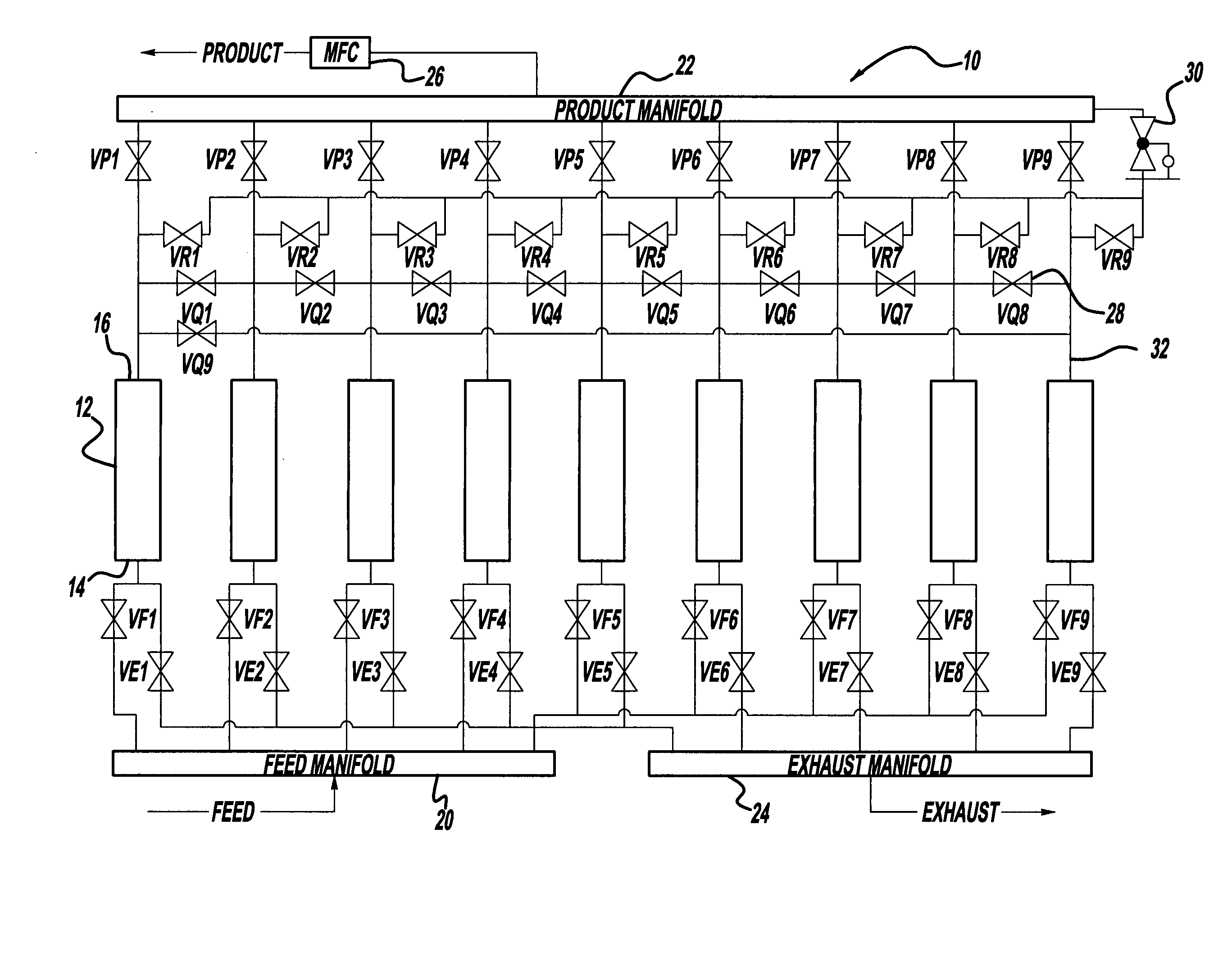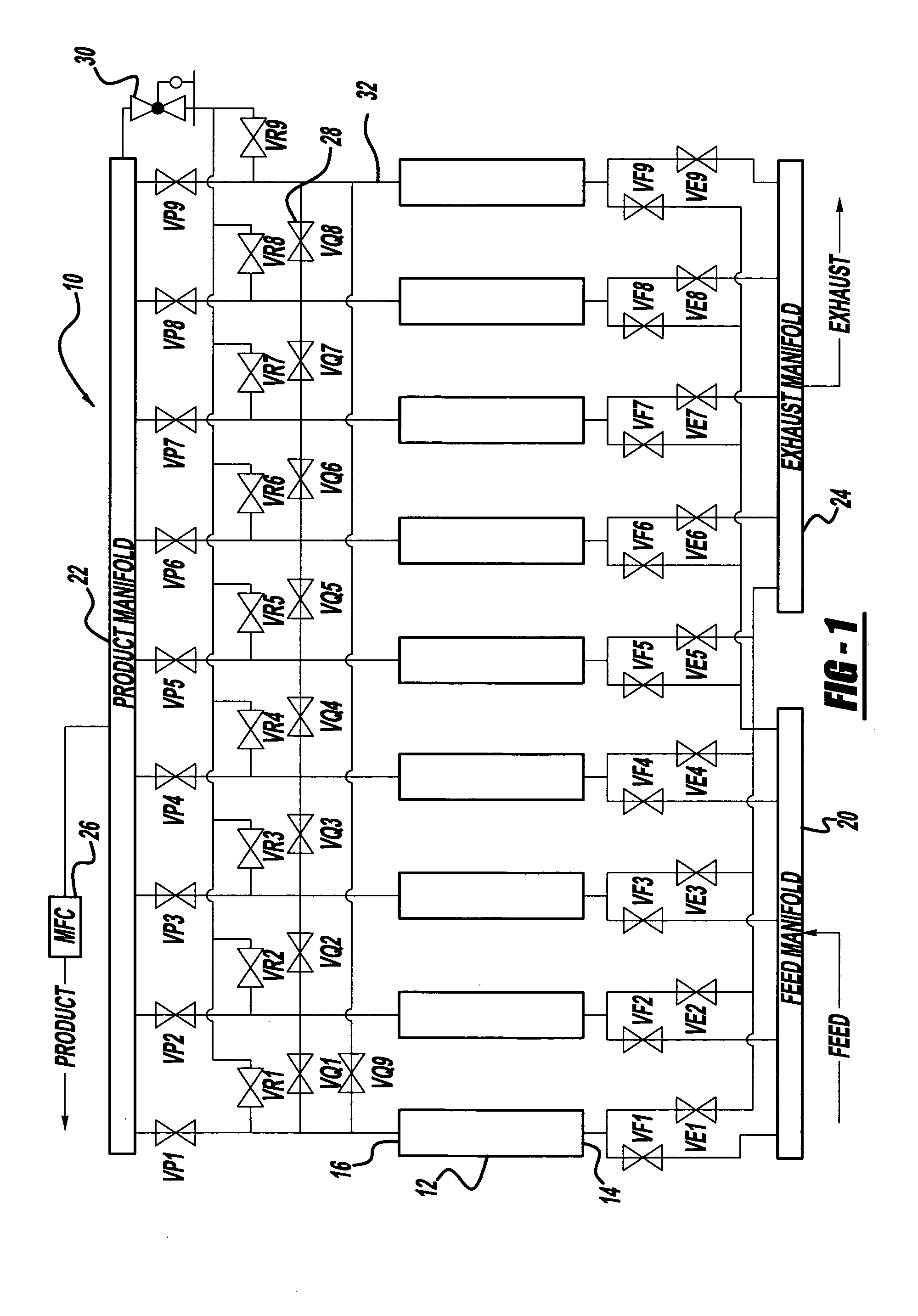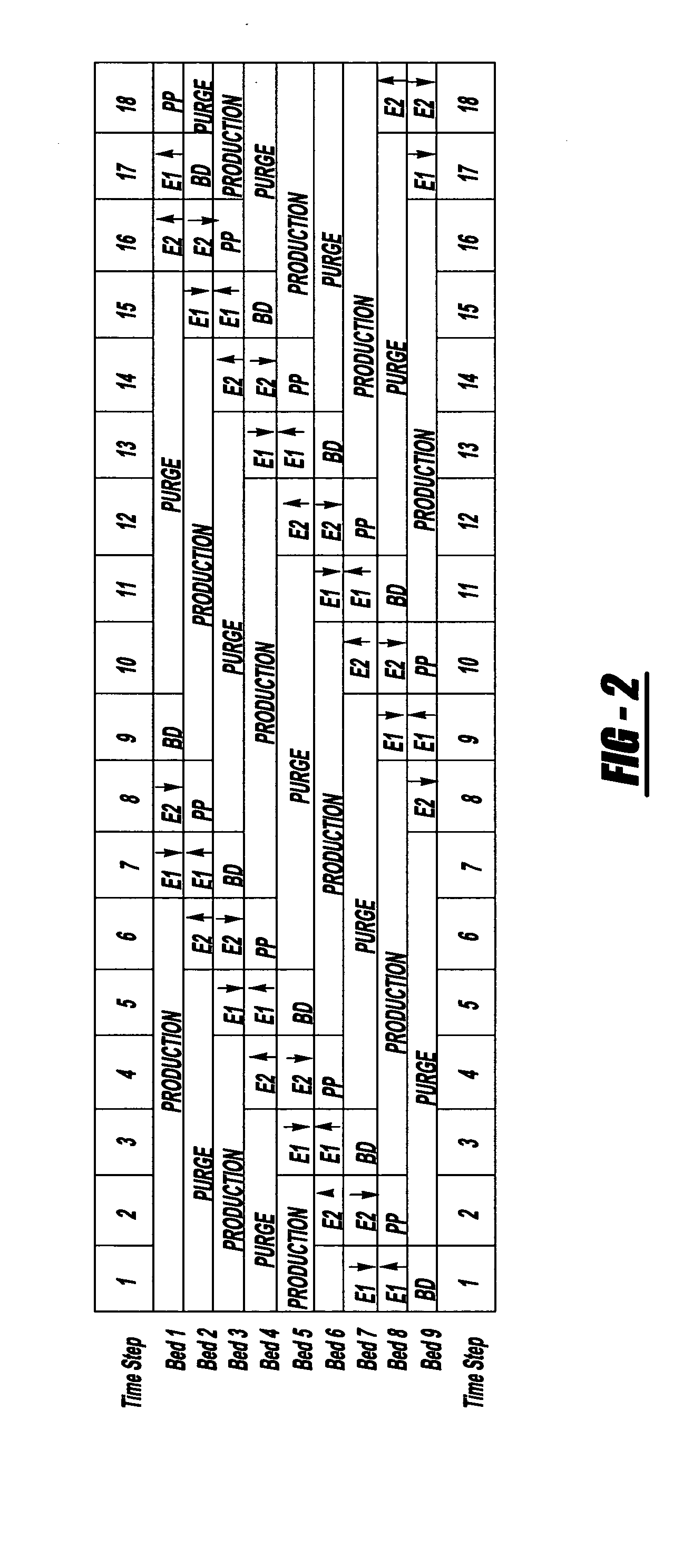Hydrogen purification process using pressure swing adsorption for fuel cell applications
a technology of hydrogen purification and pressure swing adsorption, which is applied in the direction of hydrogen separation using solid contact, separation process, products, etc., can solve the problems of affecting processor performance, carbon monoxide and water are produced, and the cost of meas is relatively high
- Summary
- Abstract
- Description
- Claims
- Application Information
AI Technical Summary
Problems solved by technology
Method used
Image
Examples
Embodiment Construction
[0038] The following description of the embodiments of the invention directed to a PSA system for purifying a feed gas is merely exemplary in nature, and is in no way intended to limit the invention or its applications or uses. For example, the discussion below of the PSA system has particular application for purifying a reformate gas in a fuel cell system for a vehicle. However, the PSA system of the invention has a much wider application for other systems and for purifying other gases besides hydrogen.
[0039]FIG. 1 is a plan view of a PSA system 10 for purifying a feed gas, such as a reformate gas, into a product gas, such as a purified hydrogen gas. The system 10 includes nine columns, beds or vessels 12 each having a feed end 14 that receives the feed gas and a product end 16 that emits the product gas. The vessels 12 include an adsorbent or mixture of adsorbents for adsorbing carbon monoxide, carbon dioxide, nitrogen, water, methane, etc. At least one adsorbent in the vessels 1...
PUM
| Property | Measurement | Unit |
|---|---|---|
| pressure | aaaaa | aaaaa |
| pressure | aaaaa | aaaaa |
| pressure | aaaaa | aaaaa |
Abstract
Description
Claims
Application Information
 Login to View More
Login to View More - R&D
- Intellectual Property
- Life Sciences
- Materials
- Tech Scout
- Unparalleled Data Quality
- Higher Quality Content
- 60% Fewer Hallucinations
Browse by: Latest US Patents, China's latest patents, Technical Efficacy Thesaurus, Application Domain, Technology Topic, Popular Technical Reports.
© 2025 PatSnap. All rights reserved.Legal|Privacy policy|Modern Slavery Act Transparency Statement|Sitemap|About US| Contact US: help@patsnap.com



